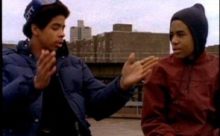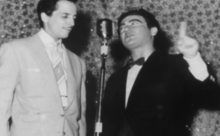Henry Chalfant |
Starting out as a sculptor in New York in the 1970s, Chalfant turned to photography and film to do an in-depth study of hip-hop culture and graffiti art. One of the foremost authorities on New York subway art,and other aspects of urban youth culture, his photographs record hundreds of ephemeral, original art works that have long since vanished. His archive of over 1,500 photographs is represented exclusively by Eric Firestone Gallery, New York and East Hampton. Exhibits of his photos include the O.K. Harris Gallery and the landmark ‘New York-New Wave’ show at P.S. l, and important galleries and museums in Europe. He has co-authored the definitive account of New York graffiti art, Subway Art (Holt Rinehart Winston, N.Y. 1984) and a sequel on the art form's world-wide diffusion, Spray Can Art (Thames and Hudson Inc. London, 1987).
In 2016, his solo-exhibition at Eric Firestone Gallery “Henry Chalfant: 1980” was accompanied by a monumental catalog featuring 30 full-color plates of Chalfant's subway photographs, along with essays by cultural critic Carlo McCormick, hip hop pioneer Fab 5 Freddy, famed graffiti writer and artist Lee Quinones, graffiti historian and former writer Jayson Edlin, and Henry Chalfant.
Chalfant co-produced the PBS documentary, Style Wars, the definitive documentary about Graffiti and Hip Hop culture and directed Flyin' Cut Sleeves, a documentary on South Bronx gangs, in 1993. He produced and directed Visit Palestine: Ten Days on the West Bank in 2002. His film From Mambo to Hip Hop was featured in the Latino Public Broadcasting series, Voces in 2006-2007, and won an Alma Award for Best Documentary.
Chalfant is a resident of New York City with his wife Kathleen, an actress. They have two children, David, a musician and producer, and Andromache, a set designer. He continues to make documentary films about urban popular culture.

